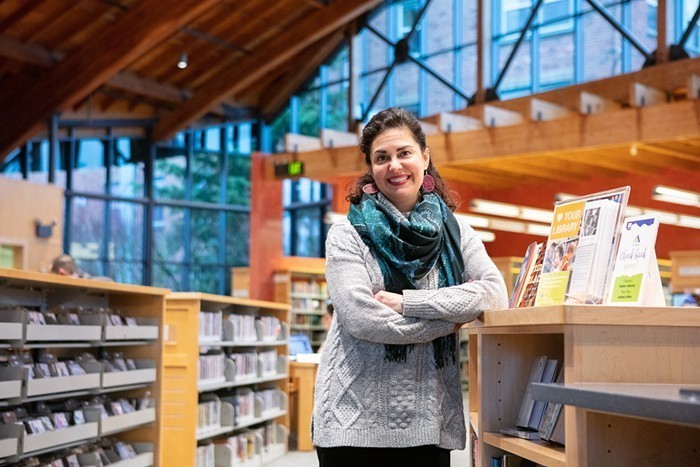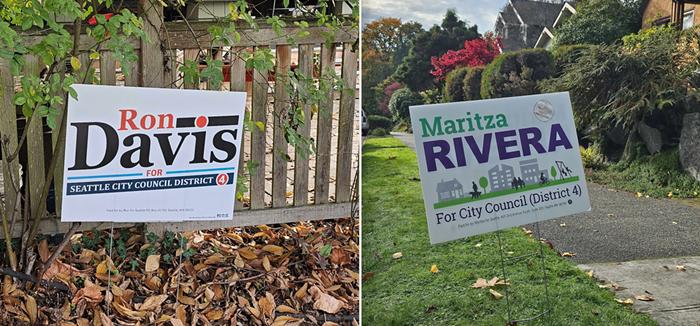
Light rail could take you from downtown Seattle to Ballard and West Seattle sooner than previously expected under a set of changes to Sound Transit 3 unveiled today.
In March, Sound Transit announced the $50 billion tax package it planned to take to voters in November. If approved, that package would expand light rail throughout the city and region. But some of the sexiest projects for Seattle voters—lines to Ballard and West Seattle and a new station in south Seattle at Graham Street—weren't going to come online for two decades, causing angst among transit advocates.
Today, Sound Transit announced that because of a new funding analysis, the agency will be able to borrow more money and shave a few years off those timelines if ST3 is approved by voters. Overall, Sound Transit 3 will increase from a $50 billion package to $54 billion total, but the tax rate will not increase. (More on that later.) The timeline improvements are modest, but affect projects all over Sound Transit's three-county taxing district.
Sound Transit CEO Peter Rogoff said today concerns about the long timelines were "one enduring and consistent theme" during recent public feedback on the ST3 plan.
Here are the highlights of today's changes, which you can read in full here:
• A line to West Seattle would come online in 2030 instead of 2033 and the line to Ballard would be finished by 2035 instead of 2038.
• Stations at Graham Street in South Seattle and Boeing Access Road in Tukwila would be done in 2031 instead of 2036.
• Light rail would arrive in downtown Redmond and Federal Way in 2024 instead of 2028, Everett in 2036 instead of 2041, and at the Tacoma Dome in 2030 instead of 2033. (The arrival of those lines to downtown Redmond and Federal Way in 2024 would come just one year after the expected opening of East Link.)
I know changes of three or five years are hard to get that excited about when projects are still 15 years out—we need better transit, like, yesterday—but this is good news. Faster timelines mean faster congestion relief and better chances ST3 can pass.
"What we will be able tell the public is that you'll see these projects open every few years," says Shefali Ranganathan, the executive director of Transportation Choices Coalition, which will run the pro-ST3 campaign this fall. "That's a very big selling point."
Sound Transit Board Chair and King County Executive Dow Constantine said today that public feedback on ST3 was clear. "The message we heard," Constantine said, "was simply: Build light rail faster."
Along with the improved timelines, a few other Seattle asks are being addressed:
• A new station at 130th Street in North Seattle would come online after light rail to Northgate, which is currently under construction, is finished. That would add about $80 million to ST3, according to Sound Transit. This is a big win for advocates in North Seattle, including Council Member Debora Juarez, who has been adamant about this station. Juarez called today's news "a giant step forward."
• Instead of building light rail to Ballard alongside traffic on 15th Avenue, the agency would elevate the line through that area. That change would make that line more reliable and add about $150 million to the package. (Some want to go even further and build a pricey tunnel under Salmon Bay for this line, but the agency shows little appetite for that.)
• Improvements to Seattle bus lines in ST3 will now include Bus Rapid Transit on Madison Street, along with the city's Rapid Ride C and D lines.
• The new downtown transit tunnel through which the Ballard and West Seattle lines will run would be funded by taxpayers from all over the region. This is interesting because of the agency's policy of "subarea equity," which generally says taxpayers' dollars should be spent in the area where those taxpayers live. This could draw ire in the suburbs, where taxpayers may be bitter about paying for a project so far from where they live, but the board's reasoning is that the tunnel will benefit the entire region because it will facilitate transfers to lines outside Seattle. Seattle Mayor Ed Murray praised this and other Seattle changes today. "Those are things I think just a few years ago we wouldn't have believed we could do," Murray said.
Now, let's talk about how we're going to pay for all this.
The $4 billion total equals an 8 percent increase in the original ST3 plan. Yet, Sound Transit says taxpayers won't pay any more in yearly taxes than under the original proposal. ST3 will cost the average household in the taxing area about $400 in new taxes per year, according to Sound Transit.
How is that possible?
Sound Transit officials say a new review of the agency's bonding program showed they can borrow more money sooner than they previously thought without endangering their credit rating. That money will allow Sound Transit to build projects faster. (Help from local governments on permitting and zoning could speed projects up even more.) This new financial review was underway when the agency released its initial package in March, but it wasn't finished yet. Because of that, their financing assumptions for the first draft of ST3 were "very conservative," Rogoff said.
While the annual cost to taxpayers will remain the same under these changes, the taxes will last longer. Under any version of the ST3 proposal, projects would be done in 25 years but taxpayers would keep paying off bonds beyond that timeframe (and then continue paying for operations costs even after the bonds are paid off). With this increase, that payback will take a little longer. The agency does not yet know exactly how much longer, a spokesperson said. In any case, paying back those taxes will likely be combined someday with another light rail measure—the eventual Sound Transit 4—meaning we'll all probably just keep paying indefinitely.
The Sound Transit Board will vote on these changes in a special meeting next Thursday. They'll vote in late June on whether to send the full package to voters.


















